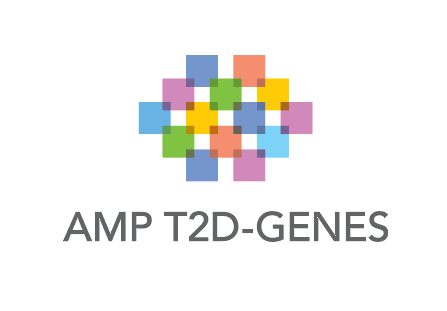
This dataset represents the South Asian subset of the AMP T2D-GENES exome sequence analysis dataset.
The 13k exome sequence analysis dataset is a subset of the AMP T2D-GENES exome sequence analysis dataset.
Publications
Exome sequencing of 20,791 cases of type 2 diabetes and 24,440 controls.
Flannick J, Mercader JM, Fuchsberger C, Udler MS, Mahajan A, et al.
Nature. 2019 May 22. doi: 10.1038/s41586-019-1231-2
Sequence data and association statistics from 12,940 type 2 diabetes cases and controls.
Flannick J, Fuchsberger C, Mahajan A, et al.
Sci Data. 2017 Dec 19;4:170179. doi: 10.1038/sdata.2017.179
The genetic architecture of type 2 diabetes.
Fuchsberger C, Flannick J, Teslovich TM, Mahajan A, Agarwala V, Gaulton KJ, et al.
Nature 2016 Aug 4;536(7614):41-7. doi: 10.1038/nature18642
Association of a low-frequency variant in HNF1A with type 2 diabetes in a Latino population.
SIGMA Type 2 Diabetes Consortium, et al.
JAMA. 2014 Jun 11;311(22):2305-14. doi: 10.1001/jama.2014.6511
Whole-exome sequencing of 2,000 Danish individuals and the role of rare coding variants in type 2 diabetes.
Lohmueller KE, et al.
Am J Hum Genet. 2013 Dec 5;93(6):1072-86. doi: 10.1016/j.ajhg.2013.11.005
Phenotypes
- type 2 diabetes
Subjects
| Project | Cases | Controls | Cohort (Click to view selection criteria for cases and controls) | Ancestry |
|---|---|---|---|---|
| T2D-GENES | 529 | 537 | London Life Sciences Population (LOLIPOP) | South Asian |
| T2D-GENES | 1,053 | 883 | Multi-Ethnic Cohort | South Asian |
| T2D-GENES | 854 | 890 | Pakistan Genomic Resource (PGR) | South Asian |
| T2D-GENES | 536 | 576 | Singapore Indian Eye Study | South Asian |
Projects
Type 2 Diabetes Genetic Exploration by Next-Generation Sequencing in Ethnic Samples (T2D-GENES) Learn more >
T2D-GENES (Type 2 Diabetes Genetic Exploration by Next-generation sequencing in multi-Ethnic Samples) is a large collaborative effort to find genetic variants that influence risk of type 2 diabetes. With funding from NIDDK, the group is pursuing three projects: (1) deep whole-exome sequencing in 10,000 people from five ethnicities (African-American, East Asian, South Asian, European, and Hispanic); (2) deep whole-genome sequencing of 600 individuals selected from extended Mexican American pedigrees; and (3) a trans-ethnic fine-mapping "mega-meta-analysis."
Overview of analysis and results
Two single-variant association analyses were conducted for each of the 25 sample sub-groups. For both analyses, all all non-reference alleles at multiallelic sites into a single “non-reference” allele. In the first analysis, all (including related) samples were analyzed using the EMMAX test, as implemented in the EPACTS software package, using the GRM computed from the ancestry-specific ancestry variants. Covariates for sequencing technology were included in the model where appropriate, but covariates for PCs of genetic ancestry, age, sex, or BMI were not included.
In the second analysis, unrelated samples were analyzed via the Firth logistic regression test, also as implemented in EPACTS; covariates for sequencing technology and for PCs of genetic ancestry (computed from the ancestry-specific ancestry variants) were included in the model. The number of PCs included varied by subgroup; to select the PCs to be included, we T2D status was regressed on sequencing technology and the first ten PCs. Any PC that demonstrated nominal (p<0.05) association with T2D, as well as all higher-order PCs, were included in the model.
For each of the 25×2=50 single-variant analyses, QQ plots of variant association statistics were inspected, and the stringency of the variant filters was increased if the distribution of association statistics appeared poorly calibrated. A 25-group fixed-effect inverse-variance weighted meta-analysis was then conducted for each of the Firth and EMMAX tests, using METAL. EMMAX results were used for association p-values and Firth results for effect size estimates.
